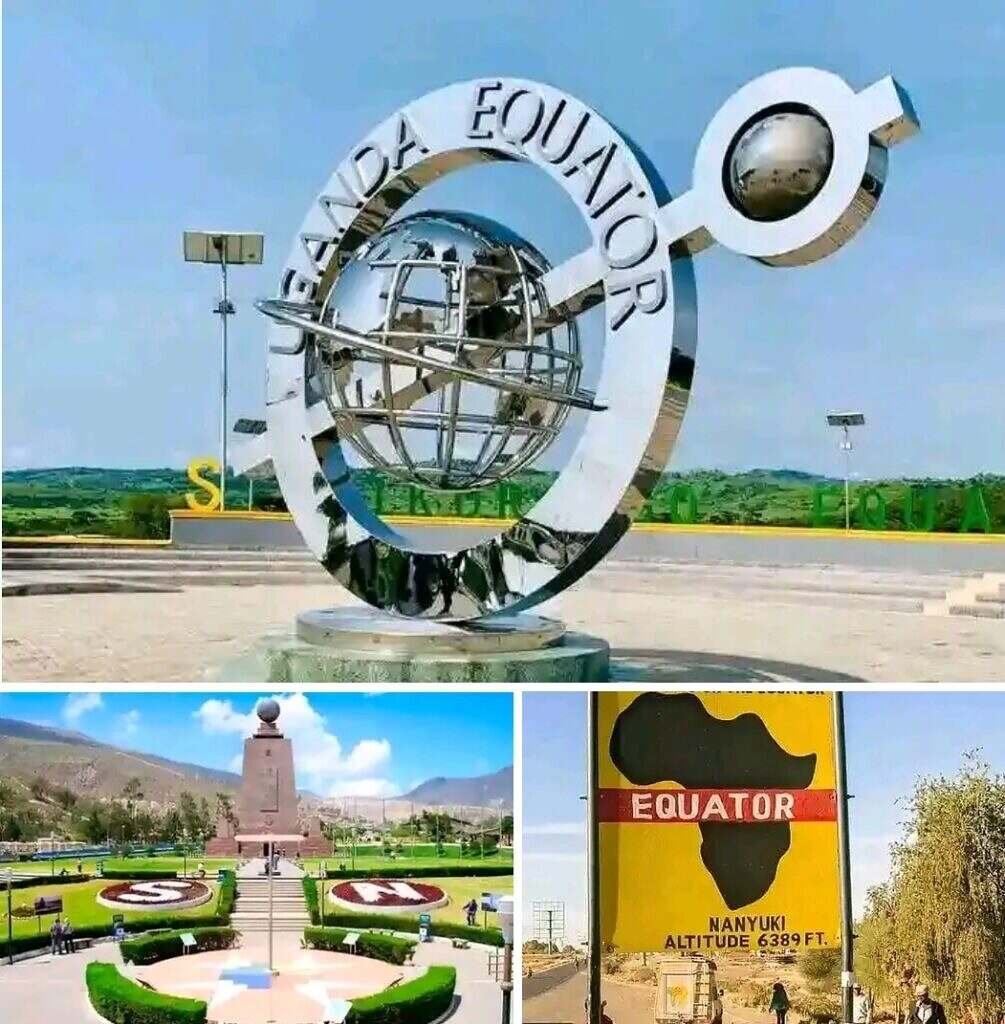
Introduction to the Equator Phenomenon
The equator is an imaginary line that divides the Earth into the Northern and Southern Hemispheres, serving as a crucial reference point in geography. It is positioned at 0 degrees latitude and is significant not only for navigation but also for understanding climatic zones and biodiversity. Only a limited number of countries lie along this vital line, making those regions unique in their geographical characteristics and cultural significance.
One of the most profound effects of the equator is its influence on climate. Areas situated on or near the equator benefit from a tropical climate characterized by consistently warm temperatures and high humidity. This climate contributes to rich biodiversity, as the consistent warmth and ample rainfall allow for lush rainforests, diverse fauna, and numerous ecosystems that thrive in these conditions. For instance, countries like Ecuador and Uganda boast some of the world’s most biodiverse regions due to their proximity to the equator, which nurtures an environment where various species can flourish.
Moreover, life along the equator is often deeply intertwined with the natural environment, influencing the customs and lifestyles of local populations. In both Ecuador and Uganda, communities have adapted to exploit natural resources and embrace sustainable practices, allowing their cultures to reflect their unique landscapes. The equator not only serves as a geographical boundary but also fosters a sense of identity for the people living in these regions.
Visiting the equator offers an enriching experience, as travelers can engage in various attractions that highlight its significance. From unique cultural practices to distinct geographical features, both Ecuador and Uganda present numerous opportunities to explore this phenomenon. The allure of standing on the equator attracts countless tourists each year, eager to witness firsthand the distinctive attributes that these equatorial nations possess.
Equator Markings in Ecuador
Ecuador is home to one of the most renowned equatorial landmarks, the Mitad del Mundo, which translates to “Middle of the World.” This site commemorates the convergence of the Earth’s hemispheres, marking a pivotal point of interest for both science and tourism. The historical background surrounding the first equatorial monument dates back to the 18th century, when French geodesists conducted measurements to determine the position of the equator. Their efforts led to the establishment of the original monument in 1936, which has since served as a symbol of Ecuador’s geographical and cultural identity.
The Mitad del Mundo encompasses not only the monument itself but also a vibrant cultural center that engages visitors with Ecuador’s rich equatorial heritage. The interactive museum located on-site offers a wealth of knowledge regarding various scientific phenomena that occur near the equator, such as the Coriolis effect and variations in gravity. This attraction serves as an educational resource, allowing tourists to gain insights into the significance of the equator in the broader context of global geography and science.
In addition to its scientific importance, the Mitad del Mundo also serves as a hub for local traditions and festivities. Every year, Ecuadorians celebrate their unique equatorial heritage through vibrant events epitomizing their culture, often involving music, dance, and culinary showcases that draw international attention. Tourists are encouraged to engage with these activities, enhancing their visit with authentic cultural experiences that highlight the significance of the equator in Ecuadorian society. Beyond the monument, visitors can explore various other attractions in surrounding areas, such as the Intiñan Solar Museum, where they can participate in engaging experiments that illustrate the unique properties of the equator line, solidifying the experience of standing at this pivotal point on Earth.
Equator Markings in Uganda
Uganda’s equator markings are prominently located at Kayabwe, a site that has become a significant tourist attraction. This geographical landmark offers visitors the unique opportunity to stand on both the northern and southern hemispheres simultaneously. The location is marked by signage and photo opportunities, making it an ideal spot for tourists to capture unforgettable moments. Visitors often engage in various activities that highlight the significance of the region’s equatorial geography.
One of the foremost attractions at the Kayabwe site includes the chance to experience local crafts. Artisans set up shops displaying an array of handmade goods ranging from traditional Ugandan attire to intricate wood carvings. This not only contributes to the local economy but also provides visitors with a concrete connection to Ugandan culture. Tourists can purchase these items as souvenirs, embodying the essence of their visit. Furthermore, local cultural performances, such as traditional dance and music, are regularly organized at the equator site, offering a deeper insight into Uganda’s rich heritage.
In addition to the market and performances, photographers find Kayabwe’s scenery particularly appealing. The verdant landscapes surrounding the equator line serve as a magnificent backdrop for photography, capturing both the natural beauty of Uganda and the unique experience of standing at the equator. Tourist accessibility is another distinguishing factor, as Kayabwe is conveniently located along the main route leading to Kampala, making it a popular stop for travelers. Unlike Ecuador, where equatorial tourism may be intertwined with more diverse ecosystems and adventure sports, Uganda’s approach tends to emphasize cultural immersion and local crafts, inviting a different type of adventurer.
Touristic Comparison of Equator Attractions
The equator serves as a significant geographical landmark, drawing tourists to different countries, notably Ecuador, Uganda, and Kenya. Visitors are often intrigued by the distinct experiences these locations offer, coupled with the unique attractions that celebrate their equatorial status. Ecuador, known as the “Land of the Equator,” provides interactive experiences at the Mitad del Mundo monument near Quito, which features a museum that showcases the science and culture associated with the equatorial line. Tourists can stand literally on the equator, capturing photographs to commemorate their visit. The vibrant markets nearby offer visitors an opportunity to sample local cuisine and crafts, enriching their cultural experience.
In Uganda, the equatorial experience is enhanced by the country’s rich biodiversity. Key attractions include the equator marker near Masaka, where travelers can engage in unique activities such as equatorial experiments, including testing the Coriolis effect. This location doubles as a souvenir shop and hospitality hub, providing a welcoming atmosphere for travelers interested in experiencing Uganda’s natural beauty. The infrequent tourist crowds allow for a more intimate experience, appealing to those who prefer ecotourism and a stronger connection to nature.
Kenya’s sign post, another prominent equatorial marker, offers a streamlined experience for tourists. Although it may not boast the experiential depth of Ecuador or Uganda, it acts as a gateway to explore Kenya’s other attractions, like national parks and game reserves. The infrastructure here is more commercialized, catering primarily to travelers interested in safari experiences. This discrepancy among the countries illustrates the various approaches to equatorial tourism, with implications for local economies. As tourism develops around these equatorial sites, it is crucial to prioritize sustainable practices, ensuring that these remarkable locations maintain their integrity for future visitors while supporting local communities.



